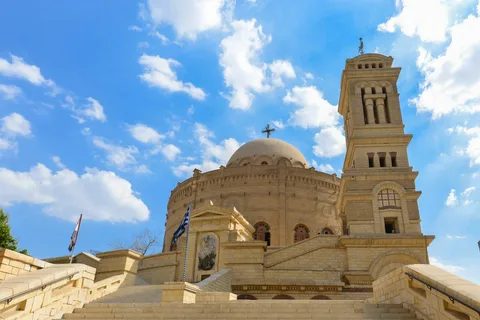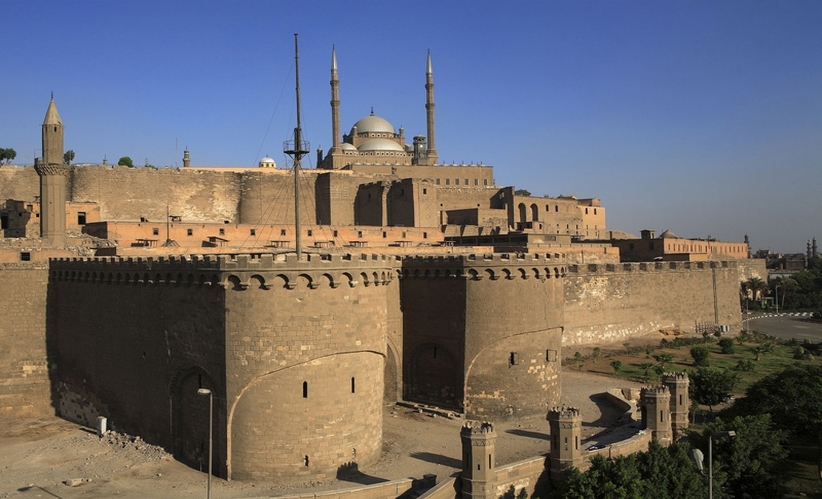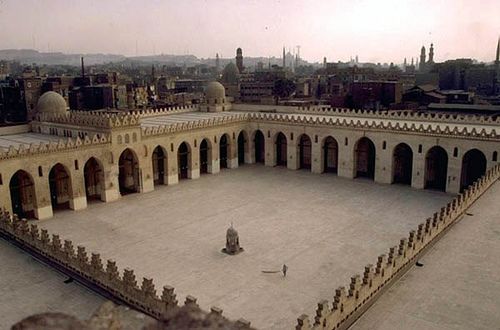
Introduction: Cairo
Cairo, the bustling metropolis along the Nile, has served as Egypt’s capital city for over a millennium. As one of the oldest continuously inhabited places in the world, Cairo holds incredible historical significance. However, beneath its modern infrastructure lie numerous archaeological treasures and cultural relics hiding in plain sight. Through dedicated rediscovery efforts, we can help preserve Cairo’s immensely rich architectural and intangible heritage for future generations.

This long-form article aims to shine a light on some of Cairo’s lesser-known historical gems that remain obscure or forgotten. By discussing lesser-publicized sites like the Al-Aqmar Mosque and underground passages beneath the Citadel, we can generate renewed public interest in appreciating Cairo’s depth as a cultural treasure trove. Shedding light on hidden landmarks, artifacts, and stories offers deeper insight into Egypt’s ancient civilizations and their lasting influence. Let’s begin our journey through the vibrant streets and quarters of Cairo to uncover some intriguing secrets buried in time.

Al-Aqmar Mosque – Oldest Surviving Mosque in Cairo
Tucked away off a busy thoroughfare in historic Cairo lies the Al-Aqmar Mosque, considered the oldest surviving mosque in the city. Constructed in 1125 AD during the Ayyubid period, its patron was the vizier Takid al-Din al-Baisi. Despite its small size and simple exterior, the Al-Aqmar Mosque incorporates sublime decorative elements that influenced later Islamic architectural styles across the region.

Its beautifully carved stucco, muqarnas vaulting, wooden furnishings, and multi-lobed arcade represent some of the earliest surviving examples of these elements in Islamic art. Walking through the space, one gains a keen understanding of how Fatimid and Mamluk architectural traditions evolved. Yet very few modern visitors are even aware of the Al-Aqmar Mosque’s existence or architectural significance. With improved preservation, interpretation, and guided tours highlighting its magnificence, interest can grow in appreciating the mosque’s tremendous historic and artistic value as a relic from early Islamic Cairo.

Hanging Church – Oldest Christian Church in Egypt
Concealed within the wall-enclosed complex of Coptic Cairo sits the Hanging Church, considered the oldest Christian church still standing in Egypt. Parts of the structure date back to the 3rd century AD, but it was expanded and adorned over centuries. What makes the Hanging Church truly unique is its location, which incorporates a cave revered as the Holy Family’s refuge during their flight to Egypt.

Venerated icons line the grotto’s walls, maintaining an aura of primordial spirituality. Natural light filters through an oculus in the church floor above, illuminating the sacred space. Walking through its zones dating from ancient to medieval periods feels like traversing Cairo’s early Christian heritage, which has been stratified through time. With improved facilities, signage, and services for visitors of all faiths, a wider appreciation can grow for this remarkably ancient site of prayer and pilgrimage. Placing the Hanging Church on cultural heritage tourism itineraries connects travelers more deeply with Egypt’s spiritual roots.
Cairo Citadel: Subterranean Discovery Potential
The colossal, walled Cairo Citadel looming over the city has historical layers concealing great archaeological mysteries. Modern infrastructure obscures vestiges of Pharaonic, Roman, and medieval Islamic structures. Yet dedicated surveys utilizing non-destructive technologies offer exciting prospects for discovering underground features.

Under over 1,000 years of urban evolution, connecting tunnels, administrative complexes, residential vestiges, and hydraulic systems may remain intact with careful investigation. Systematic probes have found remnants of Pharaonic dwellings and Roman cisterns, already shifting notions of the citadel’s origins and uses through time. With continued exploration employing ground-penetrating radar, coring, and 3D modeling, our comprehension of how different populations inhabited this fortified height could profoundly deepen.

Overall, the Citadel’s subterranean archaeological potential parallels Mexico City’s Temple Mayor discoveries, revealing intertwined histories in subterranean contexts. Revitalizing such efforts nourishes a more nuanced perspective of how Egypt’s capital city continuously evolved at this strategic site through the ages.
Medieval Cairo’s Markets, Khan El-Khalili Bazaar
Wandering through the winding alleyways of Khan El-Khalili is like stepping back into Cairo’s heyday as a medieval trade and cultural crossroads. Established in 1382 AD, it remains the largest historic souq, or marketplace, in the Islamic world. Endless shops overflow with handicrafts, herbs, and clothing, reflecting the bustling commercial diversity of its past.

Yet beneath this renowned bazaar’s contemporary aura lie remnants of much earlier urban phases awaiting discovery. Recent radar surveys detected 10th-century foundations, indicating it served as a Fatimid-era trade thoroughfare beforehand. Select excavations corroborating this could fundamentally alter notions of the district’s origins and evolution. With careful restoration of vestigial levels and interpretive signage contextualizing archaeological remains, visitors glimpse Khan El-Khalili’s depth as an integral node within a trading network stretching back to antiquity through the medieval period.

Doing so reintegrates this iconic souq more fully into an understanding of Cairo’s stratified archaeology and history as a hub linking Islamic and Christian civilizations across Afro-Eurasia through the caravan routes it epitomized for centuries. Revived exploration nourishes a nuanced view of Cairo’s medieval cultural and economic fluorescence with global entanglements.
Bab Zuweila, Medieval Cairo’s Fortified Archway
Towering ominously at the edge of historic Cairo stands Bab Zuweila, the sole remaining fortified gate from medieval Cairo. Constructed in 1479 AD during Mamluk Sultan Qaitbay’s reign, it once complemented a massive system of defensive walls. Massive carved limestone ashlars and stalwart circular towers evoke fortification against threat or invasion from the desert frontier.

Yet upon closer inspection, one discerns architectural fragments reused from earlier structures, changing perceptions of this monument’s origins. Small-find analyses of rubble infill and building techniques employed could contextualize the reuse of materials from demolished Pharaonic, Coptic, or Fatimid ruins. Systematically investigating such characteristic features with non-destructive archaeogeophysical methods may uncover additional vestigial walls, features, or artifacts below, revealing the area’s deeper chronology and urban development through the ages.

Sensitive restoration augmenting interpretation of any subsurface archaeological elements uncovered reintegrates Bab Zuweila more fully into understandings of how people inhabited this strategic location since antiquity over millennia. Doing so nurtures a nuanced view of its role in defending and connecting the medieval metropolis with hinterlands across diverse historical eras through the gateway it incarnated.
Giza Plateau: Rediscovering Antiquity’s Industrial Heartland
When imagining Giza’s iconic pyramids, few envision the sprawling industrial epicenter amidst which they were skillfully constructed with astonishing precision. Yet the plateau extending for miles functioned as workshops, quarries, habitation zones, and Celtic zones integrally tied to pyramid development for Pharaonic dynasties over centuries.

Ongoing satellite-aided surveys indicate excavated footprints occupied a vastly more expansive area than traditionally hypothesized, likely playing a pivotal economic role through multiple eras. Select subsurface investigations are now slowly revealing countless tombs belonging to artisans, engineers, and administrators housing the labor force. Workshops emerged for crafting limestone blocks, fashioning sacred artifacts, and operating boatyards to transport colossal building materials.

Combined with continued carbon dating, our comprehension of funerary traditions and related industrial and commercial complexes develops in new dimensions, unraveling mysteries of how ancient Egyptians’ staggering technical achievements were realized through integrated community-scale industry. Systematic subsurface probing guided by emerging remote technologies nurtures a deeper understanding of quotidian life amidst antiquity’s greatest monuments and engineering feats as they were established. It offers humanity unprecedented insights into organizational capacity and specialized labor, which paved civilization’s course.
Conclusion
As this extensive overview highlights, Cairo holds immense potential for rediscovering its cultural riches, still obscured or forgotten after many centuries of change. Through selectively targeted archaeological exploration, sensitive heritage restoration efforts, and interpretive programs contextualizing findings, we can foster a richer public appreciation of Cairo’s non-stop urban evolution. This helps preserve invaluable remnants of history concealed in its urban fabric for education, tourism, and shaping identity.

Reviving interest in lesser-known sites like the Al-Aqmar Mosque, underground citadel levels, and vestiges beneath Khan El-Khalili Souq nourishes multidimensional perspectives of how diverse populations continually remade this legendary city. It offers a model for heritage-led regeneration, fostering social well-being, sustainable development, and cross-cultural exchange through shared stewardship of antiquity’s living legacy. With dedicated rediscovery, Cairo can continue illuminating humanity’s storied civilizational journey.





Comment (0)